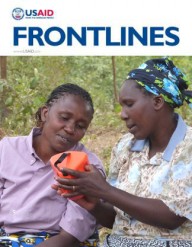Electricity is the cornerstone of any vibrant society. It empowers scientists to conduct cutting-edge research; farmers to cultivate larger and more nutritious harvests; and students to study long after sunset. But for 600 million people across Africa, these opportunities simply do not exist. Today, more than 70 percent of Africans lack a reliable source of electricity.
In June 2013, President Barack Obama launched Trade Africa and Power Africa to double access to power across sub-Saharan Africa and connect American investors to business opportunities abroad. Alongside innovative private sector partners, these global initiatives are unlocking opportunity and spurring prosperity in some of the world’s most vulnerable communities.
Built on a unique approach, Power Africa focuses on completing projects quickly and efficiently, while encouraging countries to make critical energy sector reforms.
It launched with an ambitious goal: adding more than 10,000 megawatts (MW) of new, cleaner electricity capacity and electrifying at least 20 million African households and businesses. Just a year later, 2,500 MW of power projects are fully financed, mostly by private resources, and another 5,500 MW are in the planning stages.
Power Africa embodies a new model of development—one grounded in cutting-edge innovation, committed in-country leadership and transformative partnerships between companies and communities. Instead of waiting years for the enabling environment to shape itself, Power Africa provides technical assistance that catalyzes progress—like management training, engineering knowledge and access to capital.
With a strong foundation in place, we are now aiming even higher. At the recent U.S.-Africa Leaders Summit, President Obama announced that the United States is tripling its goal for Power Africa to 30,000 MW of new electricity—bringing at least 60 million households and businesses online. That’s equivalent to expanding power to all of California and Texas combined.
But the success of Power Africa is about more than just numbers. It is proof that this more collaborative and tailored model can galvanize unprecedented progress.
In Ethiopia, for instance, we are supporting the country’s first independent geothermal plant—a project that will pave the way for future private sector investment and provide enough power to reach tens of thousands of people. In Kenya, we are working with General Electric to enable the construction of the largest privately owned wind farm in sub-Saharan Africa, which will power 150,000 homes.
These investments will light companies, classrooms and clinics in cities across the continent. But today, still more than 240 million Africans live in rural communities without electricity. Just as mobile phones replaced landlines and transformed lives across Africa, there is a need to develop and expand energy technologies that can reach tens of millions of people who are not connected to power lines.
That is why we have joined 27 private sector partners to launch “Beyond the Grid” and unlock investment in off-grid and small-scale energy solutions for 2 million rural households and businesses. It will dramatically expand our support for more flexible and affordable energy technologies—facilitating over $1 billion from new private sector investors, ranging from venture capital firms to start-up tech companies. As a result, remote communities will benefit from solutions like solar-powered lamps, cleaner cooking stoves and small wind turbines.
Already, we have seen the power of working in poor, rural areas—and on a smaller scale—to unlock broad-based economic growth. In Nigeria, Power Africa is partnering with General Electric and Afe Babalola University to build a small hydro and solar power system. It will provide electricity to more than 10,000 university students, professors and members of the community—giving life to countless innovations for years to come.
Taken together, these efforts give entire generations unprecedented economic mobility and opportunity. Power Africa is carving viable pathways for energy innovations—helping tens of millions of people leapfrog decades of development and join a global low-carbon economy. In time, this means not only more homes with light, but fewer families shackled by the tragedy of extreme poverty.











Comment
Make a general inquiry or suggest an improvement.